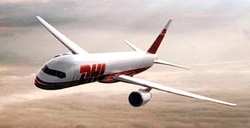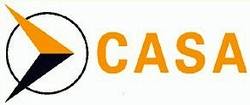 Applicability:
Oxygen Reserve Cylinders having Part Number (P/N) GLF(XXX)-(X),
GLD(XXX)-(X), PC2300 and SLF300, which are known to be installed
on, but not limited to: Airbus A300 series aircraft; Dassault
Aviation (AMD-BA); Mystére-Falcon 20, Mystére-Falcon
50, Falcon 200, and Falcon 900 aircraft. Pilatus aircraft;
Eurocopter; SA 315 B, and AS 350 B3 helicopters.
Applicability:
Oxygen Reserve Cylinders having Part Number (P/N) GLF(XXX)-(X),
GLD(XXX)-(X), PC2300 and SLF300, which are known to be installed
on, but not limited to: Airbus A300 series aircraft; Dassault
Aviation (AMD-BA); Mystére-Falcon 20, Mystére-Falcon
50, Falcon 200, and Falcon 900 aircraft. Pilatus aircraft;
Eurocopter; SA 315 B, and AS 350 B3 helicopters.
Requirement: Unless previously accomplished in
accordance with AD/ECUREUIL/121 or AD/SA 315/1:
1. For Oxygen Reserve Cylinders made of Aluminium Alloy 5283
(AA5283) fitted
to aircraft:
a. Identify the year of manufacture of each affected P/N.
b. Remove and empty the oxygen cylinder/s from the aircraft in
accordance
with the instructions described in INTERTECHNIQUE Service
Bulletin
(SB) GLD/GLF-35-150 dated 20 September 2006.
2. For Oxygen Reserve Cylinders held as spares identify the year of
manufacture of
each affected P/N oxygen reserve cylinder made of AA5283 and empty
all
oxygen reserve cylinders that have reached or exceeded 25 years
after
manufacture, in accordance with the instructions described in
INTERTECHNIQUE SB GLD/GLF-35-1-150 dated 20 September 2006.
3. Oxygen Reserve Cylinder with P/Ns as affected by this AD shall
not be installed
in any aircraft as replacement part, except within the TIS or time
since
manufacture limits as specified in this directive.
Note 1: EASA EAD 2006-0286-E refers.
Compliance:
For Requirement 1.a: Before the next flight.
For Requirement 1.b. Aircraft operated in salt-laden atmospheric
conditions - Upon accumulating 15 years TIS (since manufacture and
installation on aircraft), or within 15 days after the effective
date of this Directive if 15 years TIS has already been reached. or
Aircraft operated in normal climatic conditions - Upon accumulating
25 years TIS (since manufacture and installation on helicopters),
or within 6 months after the effective date of this Directive if 25
years TIS has already been reached. or If the TIS cannot positively
be established, within 15 days after the effective date of this
Directive.
For Requirement 2 - As of effective date of this Directive.
For Requirement 3 - As of effective date of this Directive.
Note 2: EASA EAD 2006-0286-E cancels and supersedes EASA EAD
2006-0261-E. AD/ECUREUIL/121 and AD/SA 315/1, which were based on
EASA EAD 2006-0261-E, have also been cancelled.
This Airworthiness Directive becomes effective on 26 September
2006.
 Background:
This Directive is issued following information concerning the risk
of high-pressure oxygen cylinder rupturing causing rapid venting of
the contents. These cylinders are used for missions at high
altitudes or to ensure respiratory aid for passengers feeling sick.
It has been demonstrated that the material characteristics of the
Aluminium Alloy 5283 (AA5283) from which the cylinders are
manufactured deteriorate in the course of time and may possibly
lead these oxygen cylinders to tear and abruptly vent onboard an
aircraft.
Background:
This Directive is issued following information concerning the risk
of high-pressure oxygen cylinder rupturing causing rapid venting of
the contents. These cylinders are used for missions at high
altitudes or to ensure respiratory aid for passengers feeling sick.
It has been demonstrated that the material characteristics of the
Aluminium Alloy 5283 (AA5283) from which the cylinders are
manufactured deteriorate in the course of time and may possibly
lead these oxygen cylinders to tear and abruptly vent onboard an
aircraft.
 ANN's Daily Aero-Linx (05.02.24)
ANN's Daily Aero-Linx (05.02.24) ANN's Daily Aero-Term (05.02.24): Touchdown Zone Lighting
ANN's Daily Aero-Term (05.02.24): Touchdown Zone Lighting Aero-News: Quote of the Day (05.02.24)
Aero-News: Quote of the Day (05.02.24) ANN FAQ: Contributing To Aero-TV
ANN FAQ: Contributing To Aero-TV NTSB Final Report: Cirrus Design Corp SR20
NTSB Final Report: Cirrus Design Corp SR20




